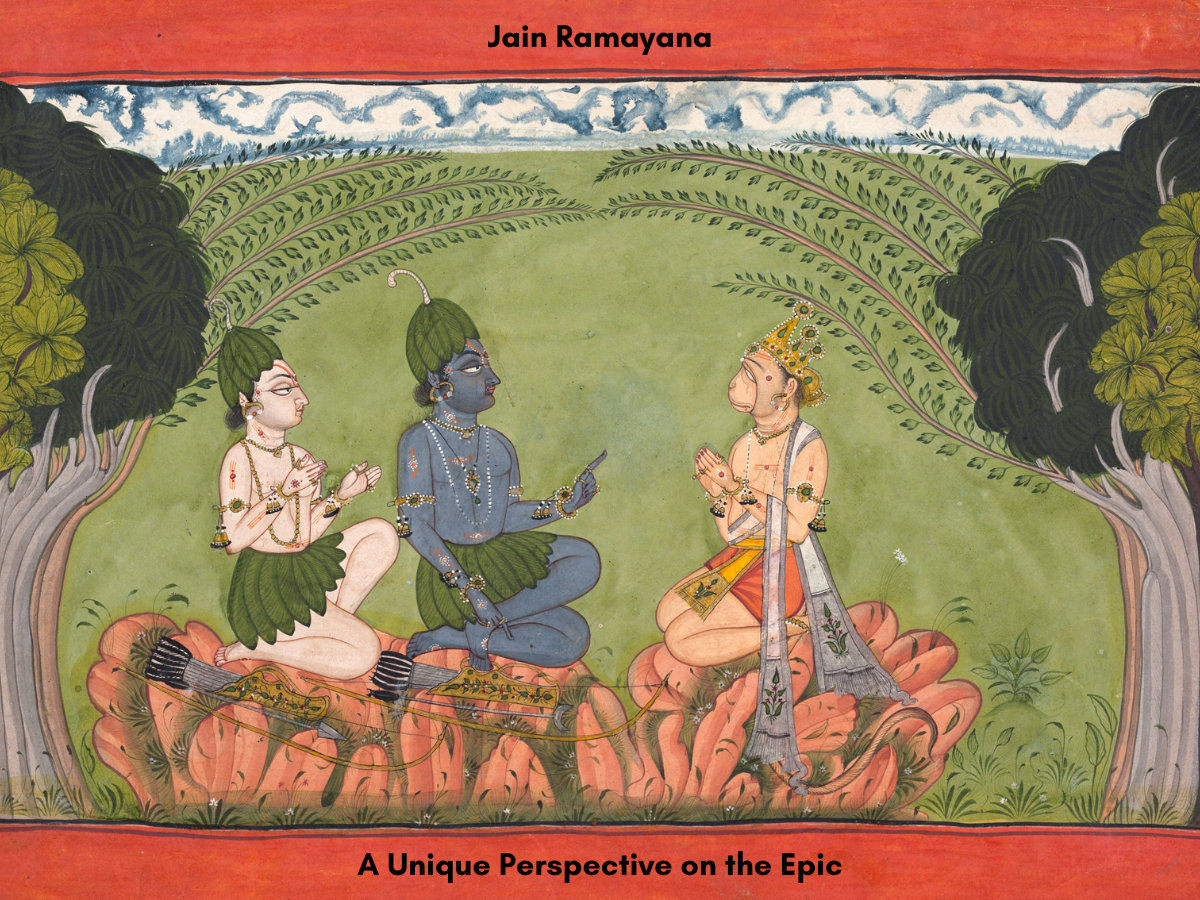
The Ramayana is one of the most revered and widely celebrated epics in Indian culture. Its stories of devotion, valor, and dharma have transcended generations, inspiring countless retellings and adaptations. While the Hindu Ramayana is the most popular version, there is also a lesser-known yet equally profound retelling of this epic in Jainism — the Jain Ramayana. This version presents a fascinating and distinct interpretation of the life of Lord Rama and offers insights into the Jain philosophy of non-violence, compassion, and spiritual liberation.
The Jain Ramayana: A Spiritual Retelling
The Jain Ramayana is an ancient text that retells the familiar story of Lord Rama, but it differs in several significant ways. Most notably, it incorporates Jain ideals, such as non-violence (Ahimsa), the rejection of violence in warfare, and the emphasis on self-realization and liberation (Moksha).
1. The Characters: Spiritual Pioneers Rather Than Heroes
In the Jain Ramayana, Lord Rama is depicted not only as a king and a warrior but also as an embodiment of ideal Jain virtues — compassion, restraint, and detachment from worldly desires. The portrayal of his character focuses more on his spiritual journey rather than his martial prowess. Similarly, Sita, his wife, is portrayed as a symbol of purity, self-control, and a woman of unwavering faith, embodying the Jain values of humility and steadfastness in one’s devotion.
Ravana, the demon king who kidnaps Sita, is not depicted as an outright villain but as a complex character. In the Jain version, Ravana’s actions are seen as misguided, driven by ego and attachment. His downfall is a reminder of the consequences of attachment and pride. The conflict between Rama and Ravana, rather than a battle of good versus evil, represents a philosophical struggle between attachment (Ravana) and detachment (Rama).
2. The Role of Non-Violence and Compassion
One of the core teachings of Rama in Jainism is Ahimsa, or non-violence. This principle is woven deeply into the Jain Ramayana. Unlike the Hindu version, where Lord Rama engages in physical warfare to rescue his wife, the Jain Ramayana emphasizes more peaceful and non-violent means. The Jain version omits the graphic battles that are central to the Hindu text. Instead, it focuses on the moral lessons that can be drawn from Rama’s actions, illustrating how he remained composed and adhered to righteous conduct, even in the face of adversity.
For instance, while Rama is portrayed as a compassionate figure, he refrains from inflicting harm whenever possible, showcasing the Jain ideal of solving conflict with wisdom and compassion instead of violence.
3. The Role of Dharma (Righteousness)
In the Jain Ramayana, the concept of Dharma (righteous conduct) plays an even more crucial role than in other versions of the epic. Dharma, according to Jain philosophy, is not just about adhering to moral duties but also about pursuing a life of renunciation, self-restraint, and ultimate liberation from the cycle of birth and death (samsara).
Rama’s decisions throughout the epic are rooted in his unwavering commitment to Dharma. However, unlike in the Hindu Ramayana, where Lord Rama’s adherence to Dharma is often linked with kingship and the preservation of the social order, the Jain perspective emphasizes how Dharma helps the individual on the path toward self-realization and liberation. It is a personal journey, a quest to overcome the cycles of karma, and ultimately achieve the state of Siddha (liberation).
4. The Themes of Detachment and Renunciation
The Jain Ramayana emphasizes the concepts of detachment and renunciation more strongly than the Hindu version. Lord Rama’s life, especially his period of exile, is presented as a form of renunciation of worldly pleasures and attachments. In Jainism, the renunciation of worldly possessions and desires is seen as a necessary step in attaining Moksha, and this idea is deeply embedded in the narrative.
Rama’s exile is not merely a political exile but a spiritual sojourn, symbolizing his detachment from the material world and his commitment to spiritual growth. Even the grand battles and heroic feats are portrayed not as acts of conquest but as tests of his spiritual resolve and commitment to the path of virtue.
5. The Absence of Hanuman and the Monkey Army
One significant difference in the Jain Ramayan is the absence of Hanuman and the monkey army. Hanuman is a key figure in the traditional Hindu Ramayana, where he is portrayed as a divine monkey and a devoted ally to Lord Rama. In the Jain version, however, Hanuman is not given a significant role, and the army of monkeys is omitted entirely. Instead, the focus is placed more on the internal spiritual journey of Rama and his interactions with other characters.
This shift further underscores the Jain interpretation of the story as one of inner growth rather than external battles. The narrative in the Jain Ramayana calls upon the reader to engage with the deeper philosophical meanings of the story, focusing on how one overcomes internal struggles rather than external enemies.
The Moral Teachings of the Jain Ramayana
At its heart, the Jain Ramayana is a story about the triumph of the soul over worldly attachments and the path to spiritual liberation. The epic provides a wealth of moral lessons, including:
- Non-Violence: The importance of resolving conflicts peacefully and compassionately.
- Detachment: The idea that true happiness and peace come from renouncing attachment to the material world.
- Righteousness: The commitment to following the path of Dharma, not out of duty to society but for one’s personal spiritual development.
- Self-Realization: The ultimate goal of attaining liberation (Moksha) and escaping the cycle of birth and death.
Conclusion: A Jain Perspective on a Timeless Epic
The Jain Ramayana offers a unique and spiritually enriching version of the story of Lord Rama. While it shares many of the same characters and events as the more widely known Hindu Ramayana, its focus on Jain philosophy and teachings makes it distinct. Through its emphasis on non-violence, detachment, and spiritual growth, the Jain Ramayana provides a thought-provoking perspective on how we can live a life of virtue and inner peace.
For those seeking a deeper understanding of the Ramayana through the lens of Jainism, this retelling offers valuable insights into the pursuit of righteousness and spiritual liberation, inviting readers to reflect on their own paths toward self-realization and Moksha.


Leave a Reply